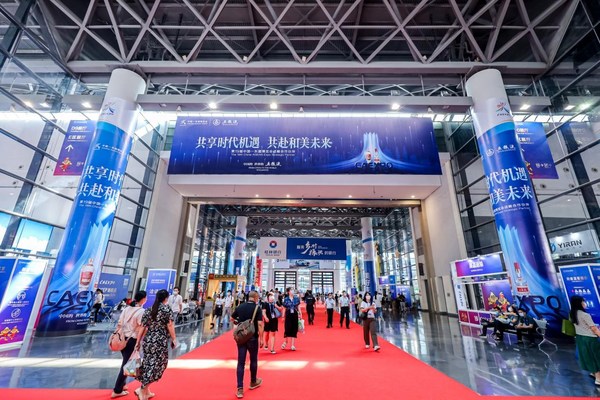BEIJING, June 30, 2022 /PRNewswire/ -- After five years' effort and construction, the Hong Kong Palace Museum (HKPM) was finally inaugurated on June 22 and is scheduled to open on July 2, representing a new cultural landmark in the Hong Kong Special Administrative Region (HKSAR).
Five years ago, on June 29, 2017, Chinese President Xi Jinping was present at the signing ceremony for the cooperation agreement between the mainland and the HKSAR on the development of the museum at the West Kowloon Cultural District.
In a show of his care and interest in the city's cultural and art development, Xi visited the district hours after he had arrived for a three-day inspection tour during the 20th anniversary celebrations of Hong Kong's return to the motherland.
Xi said that he hoped the HKSAR would carry forward traditional culture and play a role in facilitating and promoting cultural exchanges and cooperation between China and the West, and between Hong Kong and the mainland.
A window into Chinese culture
The already-thriving traditional Chinese culture of Hong Kong, known as "the Pearl of the Orient," is further boosted by HKPM's inauguration.
With elements such as red doors decorated with golden doornails, the museum embodies the excellence of traditional Chinese culture and asserts its aspiration to become one of the world's leading cultural institutions, committed to the study and appreciation of Chinese art and culture, while advancing dialogue among civilizations through international partnerships.
More than 900 treasures from the collection of the Palace Museum in Beijing will be placed on rotating display for the inaugural exhibitions. Some of these pieces are being shown in Hong Kong for the first time, while others have never been shown in public before, according to the HKPM.
In addition to physical institutions such as museums, Hong Kong has also been a stage for different styles of traditional Chinese theater. Inscribed onto the first national list of Intangible Cultural Heritage in 2006 and UNESCO's Representative List in 2009, Cantonese Opera is among the most popular.
In August 2017, in order to preserve its intangible cultural heritage, Hong Kong unveiled the first representative list of 20 items, ranging from performing arts like Cantonese Opera to festival events such as the Tai Hang Fire Dragon Dance and the traditional craftsmanship of the Bamboo Theatre Building Technique.
A fusion of East and West
Hong Kong is a place where Chinese and Western cultures blend, tradition and modernity are fused, and the old and new merge to present a unique contrast.
President Xi emphasized in 2018 that through its cultural diversity, Hong Kong will continue to play a special role in promoting East-West cultural exchange, facilitating mutual learning among civilizations, and building people-to-people bonds.
As an international business and financial center featuring openness and diversity, Hong Kong is home to some 600,000 non-Chinese residents, many of whom have resided in the city for decades.
Arthur de Villepin is one of them. He runs a gallery on Hollywood Road in the Central district on Hong Kong Island, with his father Dominique de Villepin, who served as France's prime minister from 2005 to 2007.
In an interview with China Media Group (CMG), the pair said that they had dedicated the Villepin gallery's inaugural exhibition to the late Chinese-French abstract painter Zao Wou-Ki, hailing him as a good example of "reconciliation between East and West."
The younger de Villepin expressed his confidence that "art and culture will both grow dramatically" in the city, and that the way "China will reveal itself to the world through its people with art is going to be extraordinary."
A city that tells China's stories
During a meeting with a Hong Kong delegation, President Xi said that the city, as a cosmopolitan metropolis, can tap into its extensive connections with the world, spread the best of traditional Chinese culture, and tell China's stories.
TV presenter Janis Chan is one such storyteller. In the documentary "No Poverty Land," she and her team spent three months visiting 10 areas on the Chinese mainland to introduce China's poverty relief efforts, which were not widely known to the world.
The work has won praise from viewers in Hong Kong, the mainland and beyond, winning for Chan the title of Best Female Host at the TVB Anniversary Awards 2021 in Hong Kong, and the role model of "Touching China 2021" on the mainland.
Following these honors, she told the media that it was her who was touched. "Every person we interviewed represents the remarkable character of the Chinese people."
In a recent interview with CMG, Chan said she will document more stories about China to let audiences at home and abroad know about the nation's development.










